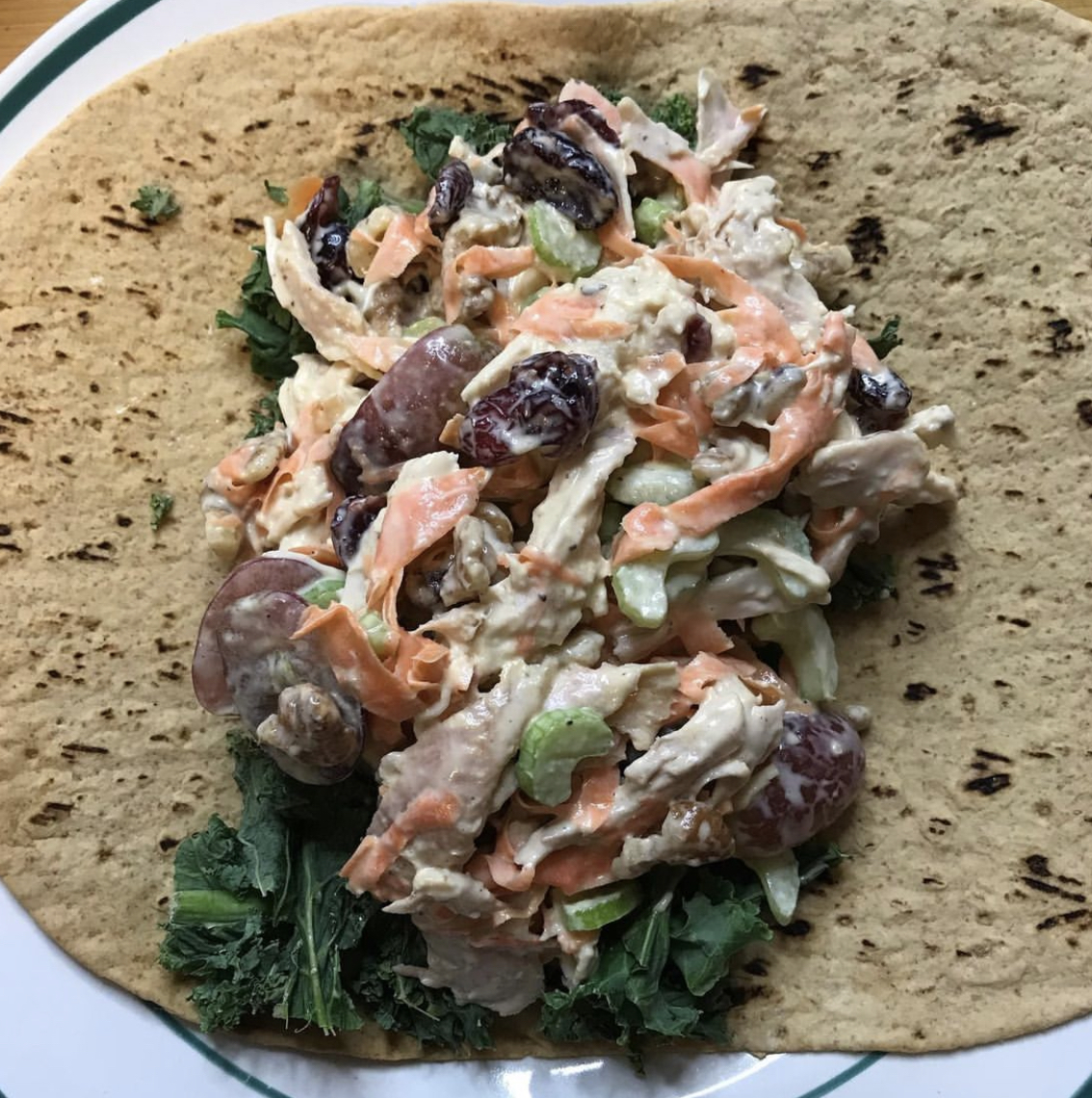Chicken salad: the mayonnaise dilemma
Chicken salad with a healthier mayo dressing. So what’s the deal with Mayo? Is it healthy? DO we need to avoid and crucify it? Find out here!

Recipe:
1.5-2tbsp mayo (I use Primal kitchen avocado oil mayo)
1 tbsp dijon mustard
1.5-2tbsp oil (I used avocado- explanation on what type of oil and why below!)
Mix well! Then season with salt and pepper and a squeeze of lemon juice.
2 stalks celery
1 carrot (shave using the peeler)
Handful (about ¼ cup) craisins
Handful (about ¼ cup) walnuts- crushed up
½ cup grapes- cut up (or more if you really like that sweet crunch
About a cup of shredded chicken
Mix it all together and enjoy on the bread/wrap/vehicle of your choice!
So what’s the deal with Mayo?
Is it healthy? DO we need to avoid and crucify it?
We can all thank Patrick and Squidward for clarifying that it’s not an instrument. Everything in excess is unhealthy and mayo is no different. Let’s break it down:
Mayo is essentially oil and egg with some acidity emulsified together. Companies add in preservatives to make it shelf stable, but its core ingredients are 2 things that we are regularly told to include in our diet.
We’ve all heard of Omega 3’s and 6’s, which are found in egg yolks and oils. Mayo does have these! The emulsification process does not alter the chemical make up- cooking at an excess temperature is how those essential omega’s are denatured.
Not every oil is created equal.
This is where a big difference in mayo lies. Most store brand, cheap mayo’s are made with soybean and vegetable oil. Plant based oils do contain those essential omega’s, but some is lost in the processing of those plants to make the oil. To explain: vegetable oil is a combination of soybean, safflower, canola, corn, sunflower AND palm oils. It has to be processed into that one oil; processing that uses chemicals to draw out the oil. Whereas avocado and olive oils are typically extracted through crushing. (Disclaimer: I am not a food inspector- every company operates differently and has their own means. This is an averaged assessment through researching companies/processes).
Olive oil and avocado oils tend to have more concentrated sources of Omega 3 and Omega 6 fatty acids. So choosing a mayonnaise that has those as a base is a great place to start. Make sure to read the label- some companies put ‘OLIVE OIL’ on the label, yet soybean oil is the first ingredient.
So what should you do with this information?
Read the label. See what type of oil they use, amount of sugar and other additives. This can be a difference maker in the mayonnaise you’re consuming (and whatever else they put in it).
Regardless- it is a source of concentrated fats and high in calories so as you should with any food, use in moderation. But by no means should you avoid it.
And why should you? Mayo can help make a meal freakin’ delicious.
My Recipe:
I used a mixture of avocado oil mayo and avocado oil with some dijon mustard (I love the added tang!). This brand of mayo does not have saturated fats (but some brands do!). This trick is a great way to use less of that product and add in a healthier, less processed kind of fat. It does not cut back much on calories, but I am not eating chicken salad to cut back on calories *shrugs*. I put it on a bed of kale and used a low calorie, whole grain tortilla so if I was counting calories- that would definitely help.
I like to shave carrots because the crunch of that PLUS the crunch of celery is a bit odd to me. I love the refreshing crunch of celery but I also love the carrot taste, so this is a great alternative to get in that carrot flavor without crunching on it.
Theres a lot of sweet in my recipe for chicken salad. Personally that mayo dressing tang plus the variety of sweetness I add is drool worthy. I am over here salivating just thinking about it.
